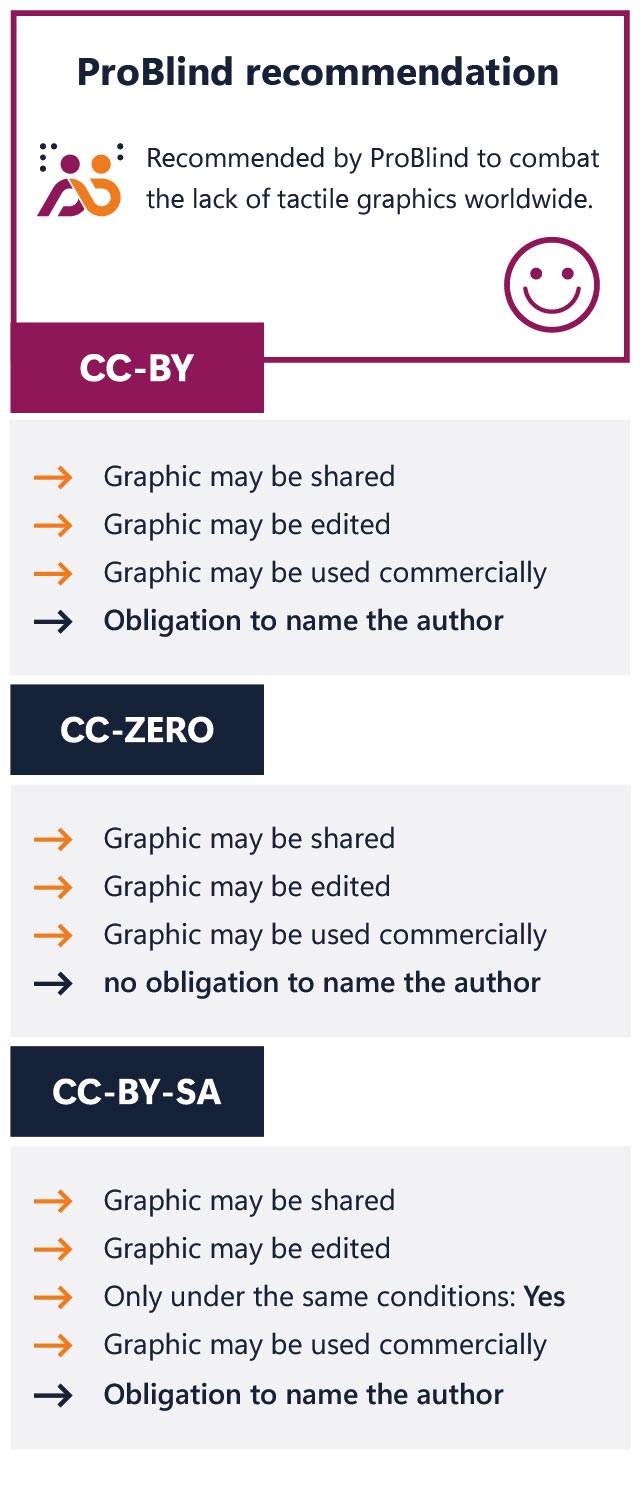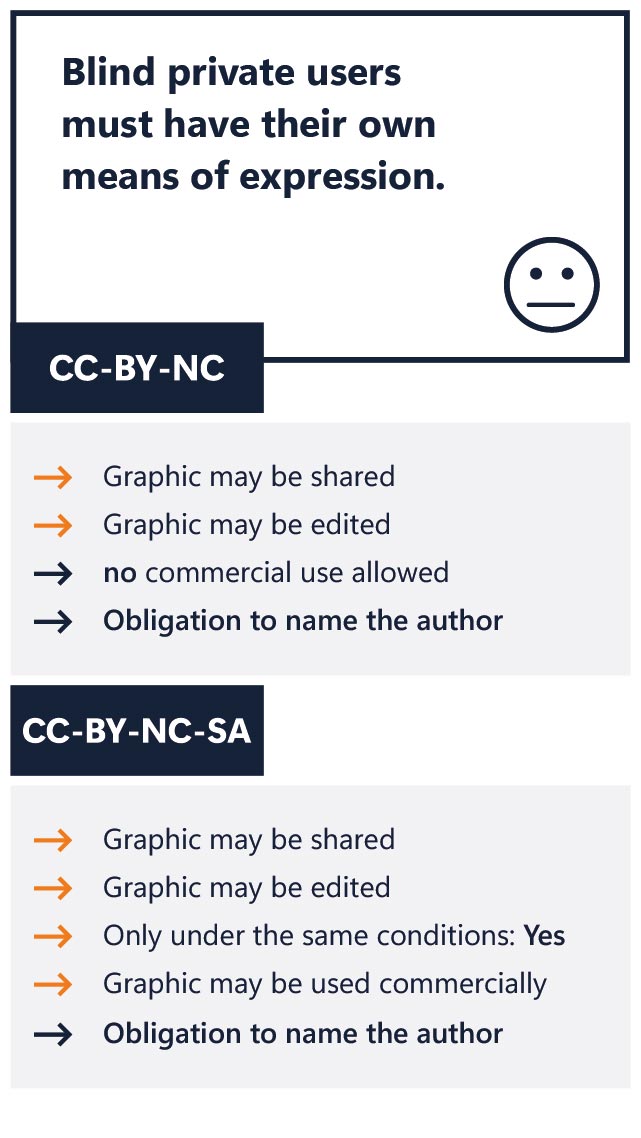Therein, more than 50 countries commit to simplifying access by blind and visually impaired people to copyrighted content (rights holders: me or third parties). Specifically, copyright protection is suspended for use by blind people under certain conditions. Since copyright protection is not suspended for sighted people, it must be ensured that the works concerned may only be used by authorized persons as defined in the Marrakesh Treaty.
To this end, it is stipulated that the persons concerned must prove their visual impairment. Furthermore, the works may not be published, reproduced, modified or made accessible to sighted people.
ProBlind supports the Marrakesh Agreement. However, since graphics covered by the agreement may not be translated into other languages, may not be modified in text or content, and may not be cloned, a huge hurdle remains in providing learning graphics to blind people, especially in education.
Therefore, ProBlind recommends selecting the Creative Commons license CC-BY 4.0 (Attribution 4.0 International) whenever possible. This allows the translation into other languages, the use as a template, the change of content, text and graphics as well as the printing of the graphics.
When creating, the biggest effort is drawing the tactile information. Adding explanatory text, on the other hand, requires little effort.
In order to make the graphics available in many languages, it must be allowed to translate them as well. The licenses CC-BY-ND and CC-BY-NC-ND do not allow this. Therefore, they can only be used in a very limited way and should not be used if possible.
To make it as easy as possible for blind people worldwide to access all sorts of graphics, ProBlind recommends the CC-BY-4.0 license.
ProBlind tries to give blind people the opportunity to work with similar learning graphics as their sighted classmates. If you feel that your rights as the author of a graphic have been violated, which is not our intention, please contact us at info@problind.org.


